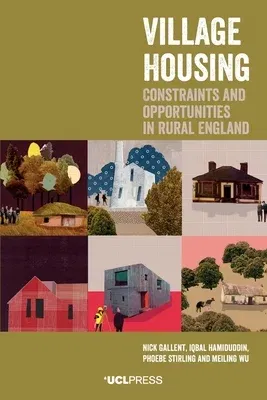An examination of housing access and affordability barriers in rural
England.
Village Housing explores the housing challenges faced by England's
amenity villages, rooted in post-war counter-urbanization and a rising
tide of investment demand for rural homes. It tracks solutions to date
and considers what further actions might be taken to increase the equity
of housing outcomes and thereby support rural economies and alternate
rural futures. The authors examine first the interwar reliance on
landowners to provide tied housing and post-war diversification of
responses to rising housing access difficulties, including from the
public and third sectors; second, recent community-led responses; and
third, actions that disrupt established production processes:
self-build, low impact development, and a re-emergence of council
provision. These responses to the village housing challenges are set
against a broader backdrop of structural constraints and opportunities
to reduce those constraints through planning, land, and tax reforms that
can broaden the social inclusivity and diversity of villages and support
their economic well-being.

